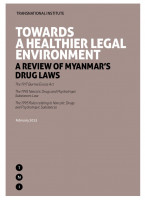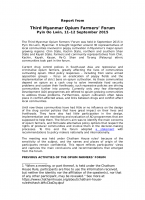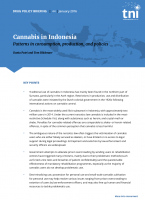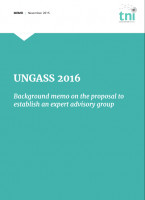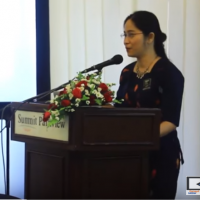7th GIZ/TNI Asian Informal Drug Policy Dialogue Phnom Penh, 5-6 January 2016
Fecha de publicación:
The 7th GIZ/TNI Asian Informal Drug Policy Dialogue was organised in collaboration with the National Authority for Combating Drugs (NACD) of the Cambodian Government. Key issues on the agenda were recent trends in the drug market in the region and the development of effective policy responses. Specific attention went to the implementation of the UN Guiding Principles on Alternative Development in the Asian context, including in the implementation of alternative development programmes in conflict areas. The involvement of affected communities in policy making and project implementation was another important theme that was discussed. A major aim of the dialogue was to look at the state of the Asian drug policy before UNGASS 2016.
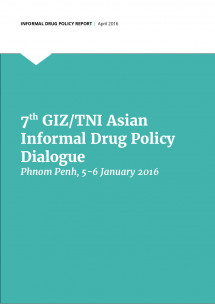
Key points of the Cambodia Dialogue
- A more active reflection amongst the ASEAN countries was considered to be necessary in order for regional drug policy to better respond to current trends.
- Opium cultivation has strongly increased in Myanmar, Lao and India since 2006. Lack of access to land and land tenure rights are an important factor stimulating poppy cultivation. A conflict situation can be a driving factor behind drug production/cultivation.
- In the region Alternative Development (AD) is viewed as an important tool to address the development needs in zones of illicit opium cultivation, especially if carried out in the context of a national development plan connected to the Sustainable Development Goals (SDGs). AD projects in conflict situation can only be carried out if the project is transparent and involves all stakeholders.
- The International Conference on AD in Thailand highlighted the most important factors of successful AD programmes. The following Expert Group Meeting on AD, organised by UNODC and GIZ, stressed that those success factors have to be put into the context of system wide coherence and linked to the relevant SDGs, and voiced for increased funding in order to realise sustainable AD programmes.
- Better data collection linked to the Human Development Indicators could also lead to an increase in funding of AD programmes Regional trends show an increase in production and use of amphetamine type stimulants (ATS). Very few services are currently available for problematic ATS users, as most resources focus on opiate users. Harm reduction and demand reduction strategies leave room for improvement. Scaling up is necessary to increase accessibility.
- In some countries the governments have started livelihood programs to support drug users. Transition from compulsory detention to voluntary treatment is taking time. A roadmap to facilitate this transition in the Southeast Asian region has been agreed.
- The merits of a health based drug approach are slowly gaining leverage. Drug law reform to accommodate health oriented drug policy is happening in some countries. The drug law review process in Myanmar confirms the importance of including all stakeholders in the legal reform process.
- Prison overcrowding and health care in prisons deserve more attention. The Thai Kamlangjai project on women in prisons could serve as an example.
- The upcoming UNGASS 2016 has the potential to stimulate discussions within ASEAN on regional drug policy and its linkages towards development policies and human rights.
